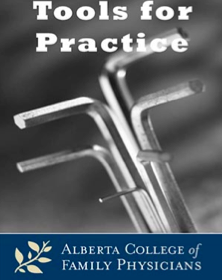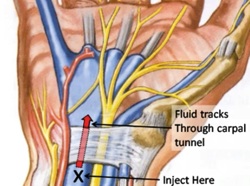NNT – Delusions of Benefit in the International Stroke Trial
![]()
NNT – Delusions of Benefit in the International Stroke Trial
The team at NNT (Number Needed to Treat) have looked at the International Stroke Trial 3 – the definitive trial on whether thrombolytics are useful in acute stroke and whether the time they are administered is important.
The NNT team say
“Results of the largest and arguably most important trial ever of thrombolytics (clot-busting drugs) for acute stroke were published last week in The Lancet, and the study’s conclusions are breathtaking. Not because of the study results, which are unsurprising, but because the authors’ conclusions suggest that they have gone stark, raving mad.”
The primary endpoints of death and disability showed no difference between the group who received thrombolytics and those who didn’t. This was consistent with nine of eleven previous trials.
However, the authors “describe a “secondary exploration” of their data using ordinal analysis. This uncommon method of measurement examined if thrombolytics may have ‘shifted’ some patients toward better categories of outcome, despite not shifting them toward being alive or independent.” And, lo and behold, they found a group who may have ‘shifted’.
NNT says:
Read More“The authors blithely conclude that thrombolytics “improved functional outcome.” Worse, an accompanying editorial trumpets that “the role of stroke and emergency physicians is now not to identify patients who will be given rt-PA, but to identify the few who will not.”…
The primary outcome failed. We have a phrase for that: no benefit.”
Fibrates: Statin’s Trusty Sidekick or Lackluster Fallback?
Fibrates: Statin’s Trusty Sidekick or Lackluster Fallback?

This weeks Tools for Practice examines the evidence for Fibrates.
Clinical Question: Do fibrates reduce cardiovascular (CV) events?
Bottom-line
When used alone, fibrates reduce non-fatal coronary events, but have no effect on mortality or other CV events, including stroke. Current evidence suggests fibrates provide no advantage when added to statin therapy.
Meta-analysis of 18 trials (45,058 patients) of fibrates versus placebo over one to six years:
- 10% (confidence interval 0-18%) relative risk reduction (RRR) in CV events.
- No significant effect on all-cause mortality, vascular mortality or stroke.
- Coronary benefits seen in both primary and secondary prevention trials.
Before initiating a fibrate, consider optimizing other CV interventions that provide better value.
In a primary prevention patient with 10% risk of CV disease over 10 years:
- Fibrates reduce CV risk to 9%
- Statins reduce CV risk to 7.5%
- Thiazides reduce CV risk to 7%
Whereas fibrate benefits are limited to non-fatal coronary events, statins and thiazides also reduce stroke and mortality risk.
References are at the Tools for Practice site.
Read MoreInjections for CTS

Steroid injections for carpal tunnel syndrome provide significant short term relief – at the 12 month mark most patients end up requiring surgery anyway. They may be helpful while you are on a long public-hospital waiting list.
Injection with methylprednisolone proximal to the carpal tunnel: randomised double blind trial | BMJ: “Injection with methylprednisolone proximal to the carpal tunnel: randomised double blind trial
(Published 2 October 1999) BMJ 1999;319:884″
The BMJ liked steroids given proximal to the carpal tunnel.
- Corticosteroid injections into the carpal tunnel may damage the nerve, and any treatment benefits may be of short duration
- A single injection with steroids proximal to the carpal tunnel improves 77% of patients with the carpal tunnel syndrome at one month after treatment
- This single injection is still effective at one year in half of the patients
- Injections proximal to the carpal tunnel have no side effects and are easier to carry out than injections into the carpal tunnel
If you subscribe to the ‘youtube one, do one, teach one‘ principle, Dr Stuart Myers of Prince of Wales Hospital, Sydney and myhand.com.au offers this video guide.
Read MoreDoes This Patient With Shoulder Pain Have Rotator Cuff Disease?
 A recent article in JAMA looked at the accuracy of clinical assessment of the shoulder in assessing the presence of rotator cuff disease.
A recent article in JAMA looked at the accuracy of clinical assessment of the shoulder in assessing the presence of rotator cuff disease.
Most helpfully, the article was accompanied by this cool video demonstrating the various clinical tests.
There were six Main Findings
1. Presence or absence of pain was not discriminatory
2. Atrophy of infraspinatus makes Dx more likely
3. Painful arc test was useful (pain begins at 60 degrees)
4. +ve lag test accurate for diagnosing tear. A negative internal lag test exluded tear)
5. +ve drop arm test increasaed likelihood of rotator cuff problem.
6. Pain with external rotation agains resistance was an accurate indicator.
Choosing Wisely
 As part of the ABIM Foundation’s Choosing Wisely campaign, the American Academy of Family Physicians today released its third list of common tests and procedures that research suggests may be duplicative or unnecessary.
As part of the ABIM Foundation’s Choosing Wisely campaign, the American Academy of Family Physicians today released its third list of common tests and procedures that research suggests may be duplicative or unnecessary.
Launched in April 2012, Choosing Wisely is a national effort that has brought together more than 50 medical specialty societies to identify common tests, procedures and medications that may not be necessary or beneficial to patients.
“As primary care specialists, family physicians are the frontline providers for millions of Americans – so we have a duty to make sure our members are doing everything they can to provide the right care, for the right patient, at the right time,” said Reid Blackwelder, MD, FAAFP, president of the AAFP. “In today’s healthcare environment, it is increasingly important to ensure physicians deliver the most effective, beneficial care possible. These Choosing Wisely lists can help our members identify treatments and procedures that may be wasteful.”
The AAFP’s new Choosing Wisely items are as follows:
Do not prescribe antibiotics for otitis media in children aged 2-12 years with non-severe symptoms where the observation option is reasonable.
The “observation option” refers to deferring antibacterial treatment of selected children for 48 to 72 hours and limiting management to symptomatic relief. The decision to observe or treat is based on the child’s age, diagnostic certainty, and illness severity. To observe a child without initial antibacterial therapy, it is important that the parent or caregiver has a ready means of communicating with the clinician. There also must be a system in place that permits reevaluation of the child.
Do not perform voiding cystourethrogram (VCUG) routinely in first febrile urinary tract infection (UTI) in children aged 2-24 months.
The risks associated with radiation (plus the discomfort and expense of the procedure) outweigh the risk of delaying the detection of the few children with correctable genitourinary abnormalities until their second UTI.
Do not routinely screen for prostate cancer using a prostate-specific antigen (PSA) test or digital rectal exam.
There is convincing evidence that PSA-based screening leads to substantial over-diagnosis of prostate tumors. Many tumors will not harm patients, while the risks of treatment are significant. Physicians should not offer or order PSA screening unless they are prepared to engage in shared decision making that enables an informed choice by patients.
Do not screen adolescents for scoliosis.
There is no good evidence that screening asymptomatic adolescents detects idiopathic scoliosis at an earlier stage than detection without screening. The potential harms of screening and treating adolescents include unnecessary follow up visits and evaluations due to false positive test results and psychological adverse effects.
Do not require a pelvic exam or other physical exam to prescribe oral contraceptive medications.
Hormonal contraceptives are safe, effective, and well tolerated for most women. Data do not support the necessity of performing a pelvic or breast examination to prescribe oral contraceptive medications. Hormonal contraception can be safely provided on the basis of medical history and blood pressure measurement.
The previous AAFP Choosing Wisely lists are on the Choosing Wisely site
Read More